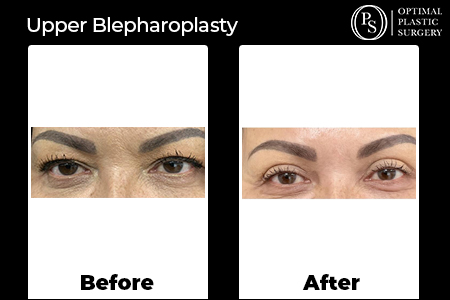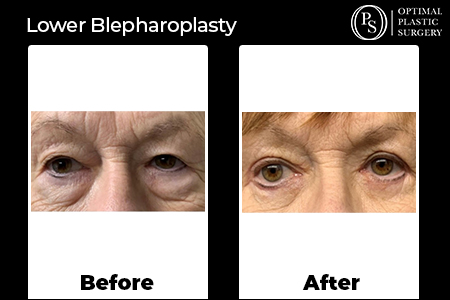Eyelid Surgery
Huntington Beach, CA
Most patients consider eyelid surgery to eliminate and tighten surplus eyelid skin (droopy eyelids) for a more youthful look. Also known as blepharoplasty, the procedure can help you see better by reducing the obstruction to the field of view, caused by droopy eyelids.
Eyelid surgery can eliminate excess skin, muscle, and even fat from the lower and upper eyelids. In some situations, the surgeon may only need to remove the skin and not the muscle — or the procedure might be done on the upper and lower eyelids.
What Is
Eyelid Surgery?
Eyelid surgery is mostly done to improve facial appearance and rarely for medical purposes. Aging may cause the upper and sometimes the lower eyelids to droop or become baggy. This same process may make the eyebrows droop or sag. As the eyelid skin stretches, the muscles lose their strength, and the fat pockets become bulbous. Sometimes, eyelid sagging may be caused by a hereditary condition. This condition affects the appeal of someone’s face and may create a stressed or older look.
Who Needs
Eyelid Surgery?
Functional and cosmetic blepharoplasty are the two main types of eyelid surgery. The former is performed to improve appearance, while the latter is done for medical reasons. In most situations, a functional eye lift is done to take off loose skin from the upper eyelid if it inhibits vision for activities such as driving. It could also be necessary if the patient is unable to wear glasses or contact lenses. The excess fold of eyelid skin can cause irritation and discomfort from undue strain to raise the sagging skin.
The Eyelid Surgery/
Blepharoplasty Procedure
The surgeon may decide to perform the surgical procedure under local or general anesthesia. General anesthesia is often used in complicated cases or if additional cosmetic procedures will be done concurrently.
Ahead of the surgery, the surgeon may make the following recommendations:
- Stoppage of medications such as pain relievers, which could thin the blood and prevent normal clotting. The patient must quit the drugs one or two weeks ahead of the procedure to limit excess bleeding during surgery
- Light meals the day before surgery and fasting on the day of surgery
- On the day of surgery, medications may be provided for conditions such as blood pressure
- Arrangement for transport back home after the procedure
Eyelid surgery does not need overnight stay unless the patient is due to undergo multiple cosmetic treatments on the same day.
How Is An
Eyelid Surgery Performed?
The surgery can be done on the upper or lower eyelids, or both concurrently. The surgeon will create the incisions on the lid carefully to ensure that there are no visible scars after the surgery. The incisions may be made on the natural fold of the eyelid, under the eyelashes, in the fold of the upper eyelid or behind the lower eyelid. That way, the scars will be mostly invisible after complete healing.
The doctor will proceed to make accurate markings to indicate where the excess skin and fat pockets need to be removed. They may also remove some underlying muscles. Surgical tools such as scalpels, scissors, radio frequency cutting tools or cutting lasers may be used to remove the tissues. The surgeon will use sutures or medical adhesives to smoothe and recontour the parts surrounding the eyelids and eyebrows.
During the surgery, the surgeon will decide on the amount of skin, muscle and fat to remove, based on preoperative examination of certain elements such as the bone structure, underlying facial muscle structure and the balance of the eyebrows. A carbon dioxide laser may be used to augment the procedure by resurfacing the skin and even out any existing wrinkles around the eyelid and eyebrow.
If the eyebrows are also droopy, a brow lift may be in order. The procedure entails cutting into the scalp and tightening the skin.
Before & After Photos


What Is the
Recovery Like?
After the eyelid surgery, the surgeon will apply antibiotic ointment. Placing ice packs on the area for 10 to 15 minutes at a time may help alleviate swelling and bruising. After about 48 hours, warm compresses should be used to accelerate healing.
The surgeon will recommend suitable pain meds, mostly over-the-counter. Minor discomfort is normal after recovery and will fade in no time. If pain persists or vision impairment occurs, patients must contact their surgeon immediately.
In Conclusion
Patients who undergo eyelid surgery usually express satisfaction afterward. The procedure enhances and rejuvenates their facial appearance and boosts confidence. Patients who have had to endure obstructed vision due to excess skin folds will be able to see better with the improved visual field.
